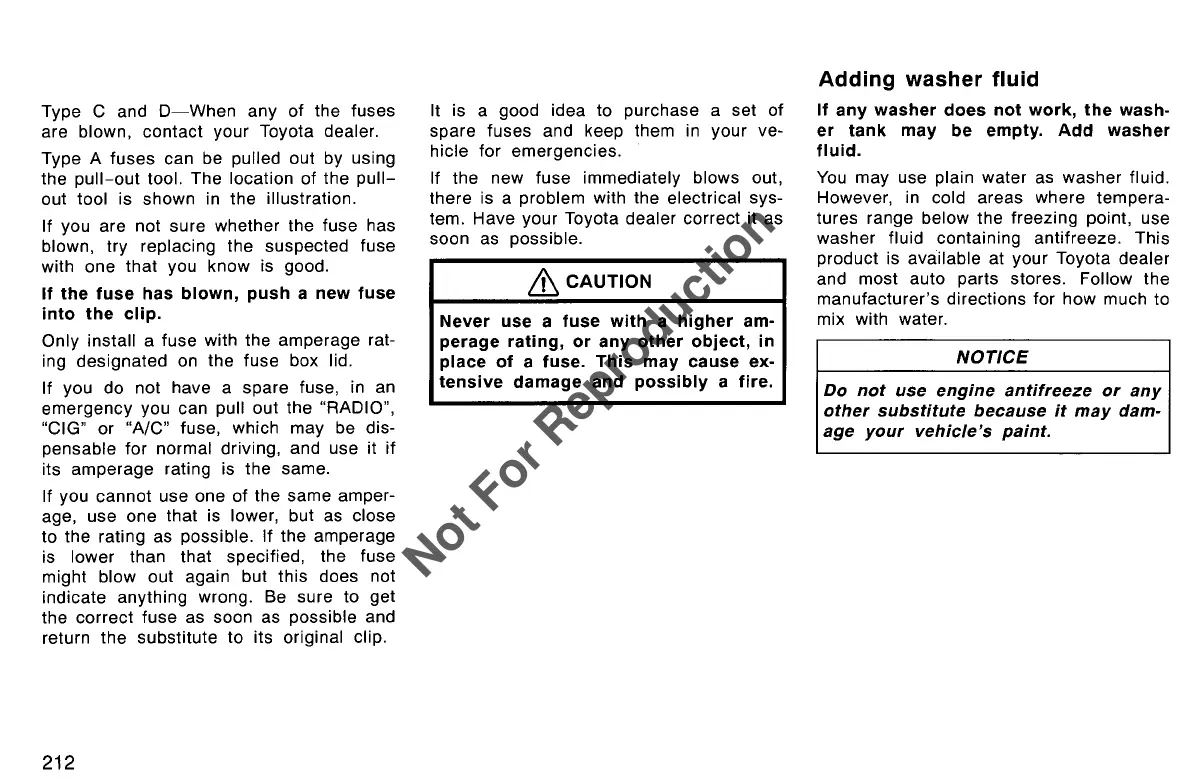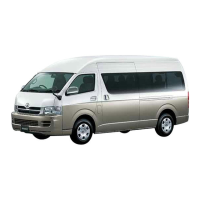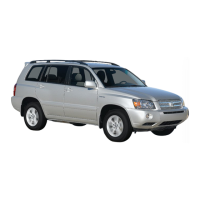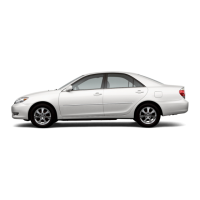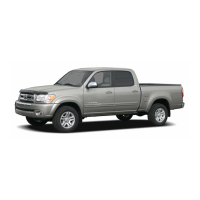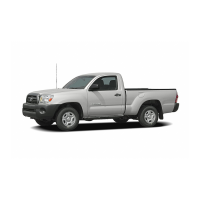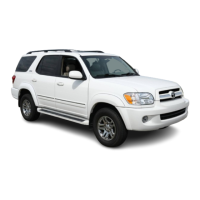Type C and
D-When
any of the fuses
are blown, contact your Toyota dealer.
Type A fuses can be pulled out by using
the
pull-out
tool. The location of the
pull-
out tool is shown in the illustration.
If you are not sure whether the fuse has
blown,
try
replacing the suspected fuse
with one
that
you know is good.
If
the
fuse
has
blown,
push
a
new
fuse
into
the
clip.
Only install a fuse with the amperage rat-
ing designated on the fuse box lid.
If you do not have a spare fuse, in an
emergency you can pull out the "RADIO",
"CIG" or
"AlC" fuse, which may be dis-
pensable
for
normal driving, and use it
if
its amperage rating is the same.
If you cannot use one of the same amper-
age, use one
that
is lower, but as close
to the rating as possible. If the amperage
is lower than that specified, the fuse
might
blowout
again but this does not
indicate anything wrong. Be sure to get
the correct fuse as soon as possible and
return the substitute to its original clip.
212
It is a good idea to purchase a set of
spare fuses and keep them in your ve-
hicle
for
emergencies.
If the new fuse immediately blows out,
there is a problem with the electrical sys-
tem. Have your Toyota dealer correct it as
soon as possible.
Lt.
CAUTION
Never
use
a
fuse
with
a
higher
am-
perage
rating,
or
any
other
object,
in
place
of
a
fuse.
This
may
cause
ex-
tensive
damage
and
possibly
a
fire.
Adding
washer
fluid
If
any
washer
does
not
work,
the
wash-
er
tank
may
be empty.
Add
washer
fluid.
You
may use plain water as washer fluid.
However, in cold areas where tempera-
tures range below the freezing point, use
washer fluid containing antifreeze. This
product is available at your Toyota dealer
and most auto parts stores. Follow the
manufacturer's directions
for
how
much to
mix with water.
NOTICE
Do
not
use
engine
antifreeze
or
any
other
substitute
because
it
may
dam-
age
your
vehicle's
paint.

